Ancient Greece is on the naked scientists' menu this week as we travel back in time to 1200 BC to discover how modern science and a 3000 year old poem have solved an ancient riddle. A team of classicists, geologists and archaeologists claim to have found the island of Ithaca, home of the legendary Greek hero Odysseus. Digging further into the past we also hear how geophysics can help archaeologists to see what lies buried underground but without having to lift a trowel. We also learn how dormant brain stem cells can be brought back to life, why it's not just size that is important when it comes to brains, and the mind-controlling parasite that turns its host first into an egg-incubator and then into a bodyguard. Plus, in Kitchen Science, savouring the Greek flavour, Ben and Dave recreate the science of the original Naked Scientist, Archimedes, and find out whether a heap of gold coins are the real thing...
In this episode
Waking up stem cells
Many researchers are working on adult stem cells - the immortal cells that regenerate old or damaged tissues in our bodies - as they have great potential for treating many diseases, with fewer ethical issues than stem cells taken from embryos.
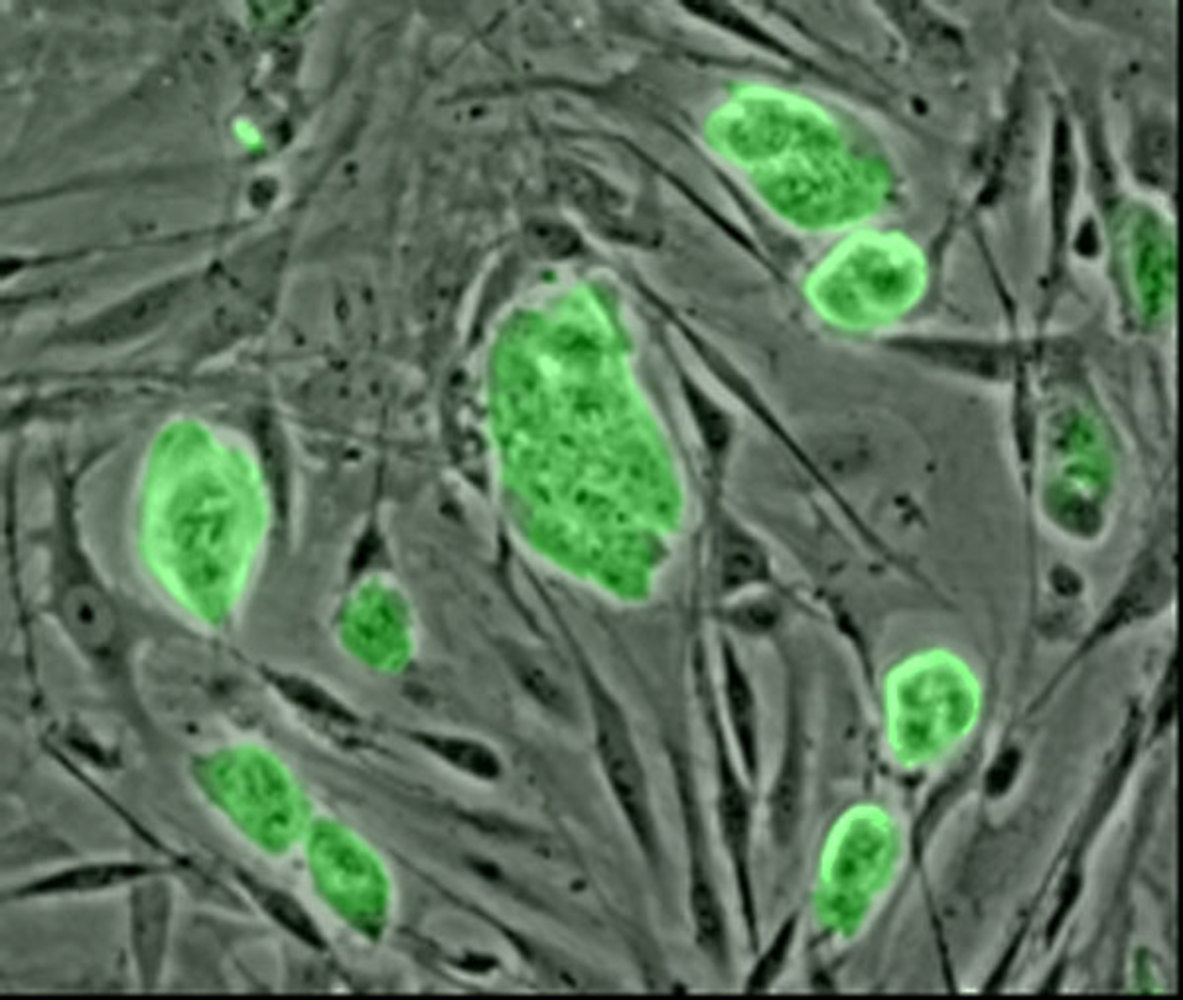 Now scientists at the Schepens Eye Research Institute in Boston have found the chemical triggers that can wake up stem cells in the brain, making them multiply and repair damaged brain areas, or send them back to sleep again.
Now scientists at the Schepens Eye Research Institute in Boston have found the chemical triggers that can wake up stem cells in the brain, making them multiply and repair damaged brain areas, or send them back to sleep again.
The story started earlier this year, when the researchers, led by Dr Dong Feng Chen, found that stem cells are scattered throughout the brain, but are usually kept 'asleep' by chemical signals sent from neighbouring cells.
It had previously been thought that stem cells were restricted to two specific parts of the brain, known as the subgranular zone of the hippocampus, the area responsible for learning and memory, and the subventricular zone which makes nerve cells that help us smell. So it was believed that when nerve cells died in other areas of the brain, they were lost forever.
First, the team showed that stem cells could be found all over the brain by growing tissues from different regions of mouse brains in the lab alongside supporting cells called astrocytes taken from the hippocampus (where stem cells do regenerate). They found that nerve cells could regenerate, proving the presence of stem cells.
Next, the researchers compared the chemical signals produced by astrocytes from the hippocampus with those made by astrocytes from other areas of the brain. They have now discovered that in areas where stem cells are 'sleeping', astrocytes make high levels of two molecules called ephrin-A2 and ephrin-A3.
These molecules are produced in much lower amounts by astrocytes in the hippocampus - instead they make a protein called sonic hedgehog (named after the computer game character). The scientists have shown that removing these ephrin molecules, or adding sonic hedgehog, can reawaken stem cells.
This new research adds hope to the idea that we might be able to reactivate stem cells in damaged brains, helping to rebuild them from within. This could potentially treat diseases such as Parkinson's or Alzheimer's, as well as brain or spinal cord injuries.
The next step for the team will be to try and wake up sleeping stem cells in animals with diseases such as Parkinson's, to see if this works in whole brains, rather than cells grown in the lab.

Parasite turns host into bodyguard
Scientists in the Netherlands and Brazil have discovered a parasite that turns its caterpillar host first into an egg incubator and then into a bodyguard!
 Writing in the journal PLoS one, University of Amsterdam researcher Amir Grosman and his colleages studied how a species of parasitic wasp called Glyptapanteles takes control of the caterpillars of the geometrid moth Thyrinteina leucocerae. The team exposed caterpillars in the laboratory to the adult wasps, which immediately laid clutches of 80 eggs inside the caterpillars bodies. The caterpillars showed no ill effects and continued to move and eat normally for the next 11-16 days. But then things changed dramatically.
Writing in the journal PLoS one, University of Amsterdam researcher Amir Grosman and his colleages studied how a species of parasitic wasp called Glyptapanteles takes control of the caterpillars of the geometrid moth Thyrinteina leucocerae. The team exposed caterpillars in the laboratory to the adult wasps, which immediately laid clutches of 80 eggs inside the caterpillars bodies. The caterpillars showed no ill effects and continued to move and eat normally for the next 11-16 days. But then things changed dramatically.
During this time the eggs had hatched inside the caterpillars and turned into larvae, which then made holes in the sides of the caterpillar and crawled out onto the nearby leaf surface where they formed a pile of pupae. At this point the previously-parasitised caterpillar stopped moving around and also ceased eating. Instead it took on the role of a minder and for the next 6-7 days before the adult wasps emerged it defended the pile of pupae, lashing out aggressively with head-rearing movements whenever a potential predator approached. 50% of the time at least this was sufficient to dislodge or disuade the approaching predator from lunching locally.
Unfortunately there was no reward for the hard work done by the caterpillar, which died once the adult wasps emerged from their pupae. The team aren't sure how the wasp larvae achieve this feat of behavioural manipulation of their host, but one theory is that not all the wasp larvae vacate the caterpillar to pupate. One or two sacrifice themselves by remaining behind, suggest the researchers, to cause the caterpillar to defend their kin, although exactly how, at this stage, remains a mystery.
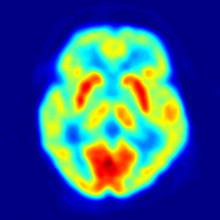
Tracing the roots of the brain
Human brains are amazing works of biological engineering, and one of our greatest challenges as scientists is to understand how they have evolved. Now researchers writing in the journal Nature Neuroscience have shed some light on the origins of the brain, and how we developed such large, complex ones.
 Currently, scientists think that the connections between nerve cells, known as synapses, are similar in most animals from tiny worms to humans, and that it is simply the increase in their number that allows more complicated thinking. Put simply, the theory goes that more nerves equal more brain power. But now, researchers, led by Professor Seth Grant at the Wellcome Trust Sanger Institute, have found that it is not simply size that gives us our brain power but also, during evolution, increasing complexity in the molecular processing of nerve signals at synapses.
Currently, scientists think that the connections between nerve cells, known as synapses, are similar in most animals from tiny worms to humans, and that it is simply the increase in their number that allows more complicated thinking. Put simply, the theory goes that more nerves equal more brain power. But now, researchers, led by Professor Seth Grant at the Wellcome Trust Sanger Institute, have found that it is not simply size that gives us our brain power but also, during evolution, increasing complexity in the molecular processing of nerve signals at synapses.
The team looked at around 600 molecules that are found in synapses in different species, and found dramatic differences in the number of different molecules that were present. For example, only around half are present in invertebrates (animals without a backbone, such as fruit flies) compared with higher organisms.
Remarkably, the scientists also found that around a quarter of the proteins involved in synapses (and therefore learning and memory) are even found in single-celled yeast, which obviously have no brains. Instead, these proteins help the yeast cells to respond to signals from their environment, such as stress due to a lack of food or temperature change.
Overall, the study shows that two leaps in sophistication in the structure of nerve junctions could have been the driving force that allowed complex brains to evolve, and that this occurred before brains significantly increased in size. The first major wave of change happened around a billion years ago, when the first multicelled organisms appeared. Then the next wave happened when vertebrates came along, around 500 million years ago.
Most important for understanding of human thought, the team found the increase in synapse molecules that occurred in vertebrates provided a pool of proteins that were used for making different parts of the brain into the specialised regions such as cortex, cerebellum and spinal cord.
These new findings will be important in understanding normal functioning of the human brain and will also shed light on a number of diseases and brain problems, including mental disability.
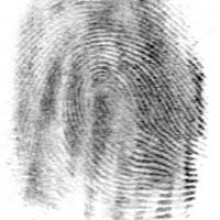
09:23 - Finding Forgotten Fingerprints
Finding Forgotten Fingerprints
with Dr John Bond
Chris - Now, forensic scientists at the University of Leicester, working with Northamptonshire police, have announced a major breakthrough in crime detection which could lead to hundreds of cold cases being reopened. This is the work of Dr John Bond and he's a scientific support officer for Northamptonshire police. He's also a fellow of Leicester University. John, thank you for joining us. You've found a way of getting fingerprints from surfaces that couldn't previously be fingerprinted. How does this actually work?
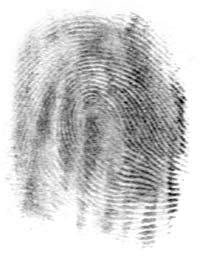 John - Basically, we've been looking at new ways of enhancing fingerprint deposit. That's the secretion of sweat that you might leave on any surface that you might touch with your fingers. For many years the police in this country and worldwide had a range of conventional techniques but all require some sort of physical or chemical interaction with the deposit that you leave behind. They either stick to it and make it visible or they chemically react with it and maybe change its colour so you can see them.
John - Basically, we've been looking at new ways of enhancing fingerprint deposit. That's the secretion of sweat that you might leave on any surface that you might touch with your fingers. For many years the police in this country and worldwide had a range of conventional techniques but all require some sort of physical or chemical interaction with the deposit that you leave behind. They either stick to it and make it visible or they chemically react with it and maybe change its colour so you can see them.
Chris - So that must mean there are physical constraints over what sorts of surfaces can be fingerprinted?
John - Absolutely. Smooth, non-porous works very well for things like powder. A technique using superglue where the superglue actually polymerises: forms white strands on the fingerprint deposit. On things like paper where the fingerprint deposit might soak in there's a range of chemicals that react with things like amino acids that are secreted in your sweat. All of those techniques require that deposit to still be there. If you remove the deposit all conventional techniques will fail.
Chris - This will be, for example washing the surface or wiping the surface - on the part of the criminal - to try and clean up the evidence?
John - Yes and that would be a very good example of that. It could also be extreme environment conditions that might, as you said, wash away or even vaporise the fingerprint deposit.
Chris - How does your new technique work?
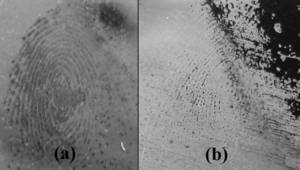 John - What we've been looking at is a phenomenon we've found that fingerprint deposits will tend to corrode metal surfaces. There's some constituents in the fingerprint deposit that on metals like brass and copper will corrode the metal to an extent that even when you've then got rid of the residue totally you can sometimes actually see an image of where the fingerprint was in the metal or, where that's not possible, we've developed a technique to actually enhance that corrosion and make the fingerprint become visible again.
John - What we've been looking at is a phenomenon we've found that fingerprint deposits will tend to corrode metal surfaces. There's some constituents in the fingerprint deposit that on metals like brass and copper will corrode the metal to an extent that even when you've then got rid of the residue totally you can sometimes actually see an image of where the fingerprint was in the metal or, where that's not possible, we've developed a technique to actually enhance that corrosion and make the fingerprint become visible again.
Chris - So how do you visualise the fingerprint in the form of its corrosion pattern on that surface?
John - We take the metal and apply an electrical potential to it at the order of 2500V. We then apply a very fine conducting powder, very similar to photocopying toner powder. What we've discovered is that that will preferentially adhere to the metal at the points where the corrosions occurred which are coincident with the original fingerprint ridge pattern. You get an image of where the fingerprint was in this black powder.
Chris - Why does it stick just where the fingerprint is? Why does it preferentially adhere there?
John - What we've discovered is in the areas of corrosion the potential is a few volts less than the 2500V that you apply. When the conducting powder is streaming across the surface of the metal it takes on 2500V, it takes the potential but the bulk of the metal is at. With these points of lower potential it seems to sit in that area and take the lower potentials and not have enough energy to get back up out of that potential well. It resides in the areas of lower potential.
Chris - How do you translate the photocopier toner into a physical image you can see?
John - It just appears as a black image against the contrast of the copper or the brass metal. You can actually just see it sitting there.
Chris - what sorts of things do you can apply this to which will help to solve new cases?
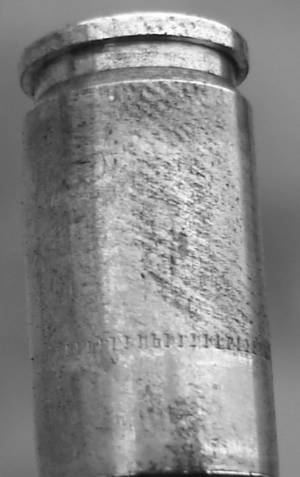 John - A very good practical example of this - and it's very fortunate - is that most bullet casings are made of brass. Already we've been able to show in some of our research that a fingerprint deposited on a gun cartridge case prior to being loaded into the gun which was then enhanced after the gun has been discharged can reveal the fingerprint with this black conducting powder. For the first time we can actually get a fingerprint of who was loading the gun.
John - A very good practical example of this - and it's very fortunate - is that most bullet casings are made of brass. Already we've been able to show in some of our research that a fingerprint deposited on a gun cartridge case prior to being loaded into the gun which was then enhanced after the gun has been discharged can reveal the fingerprint with this black conducting powder. For the first time we can actually get a fingerprint of who was loading the gun.
Chris - Are the police actually using this activity now or will there be a trial period before it can be admitted as evidence into say, a court of law?
John - We have demonstrated the practical use of it with these gun casings and we've now been approached by a number of police forces in the UK and also a prosecuting attorney. In the US that have live and sometimes historical cases with gun cartridges. People say to us,
"Look this hasn't worked conventionally. We haven't got anything on it. We can't do any more. Let's have a go with your technique."
Chris - John, thank you very much for joining us to talk about your work.
John - Thank you.
Does putting bananas in the fridge make them poisonous?
This is a bit of an old wives' tale. I've found it repeated elsewhere as well: people going, "My mother said I should never put bananas in the fridge or I'm going to die!" Basically, this is not true. Bananas are not poisonous and they do get refrigerated along their journey from wherever they grow, tropical places to you. Bananas produce a gas called ethylene or ethene and this is used to ripen fruit. So if you've got some hard fruit and you want to ripen it up stick it in a bag with a ripe banana and it will ripen nice and quickly. One thing that will happen with bananas in the freezer is that they will go black. Bananas have really sensitive cells in their skin, and so get damaged very easily below about 12 degrees centigrade. They release enzymes and this is what causes that black oxidation. The banana inside will be fresh and lovely!
How does carbon dating work?
They key to carbon dating is that the carbon isn't the carbon that's been on Earth ever since the Earth was formed. The carbon that's in carbon dating is carbon that's been newly made. Where that comes from is when cosmic rays - high energy particles from the sun - hit the Earth's atmosphere they interact with atoms and send neutrons flying around. when one of these neutrons hit a Nitrogen-14 (14N) atom, it knocks out a proton, and the 14N becomes Carbon-14 (14C). This then circulates in the atmosphere but because this process is happening roughly at the same rate continuously the amount of carbon that's in the atmosphere is roughly continuous. Most of it ends up in the atmosphere as carbon dioxide so you have 14C carbon dioxide. Plants then pick that up in their process of photosynthesis and they turn it into sugar. You then eat the plant and all the time that you are alive you're gaining radioactive carbon in your body which you incorporate into your body. The level in your body will be roughly constant because you're taking it in at a roughly constant rate from the environment. The ratio of radioactive to non-radioactive carbon should be the same all the time you or a plant are alive. But when you die you stop adding new carbon-14 to your body and the 14C you've already got starts to break down to 14N because it's radioactive. The half-life is about 5500 years or so. When you find an ancient specimen all you have to do is to compare how many 14C atoms are in it to the number of 12C atoms. The ratio tells you how long it was since it was last alive and this gives you a ballpark figure for its age. This does make the assumption that the production of 14C and incorporation into the food chain is the same now as it was thousands and thousands of years ago. This assumption but it's assumed to be a fairly reasonable and accurate way to do it.
The guy we have to credit is Willard Libby who discovered carbon dating in the 1940s, got the Nobel Prize for it actually.

Eureka! Testing Archimedes Principle with Real Gold
What are alternatives to carbon dating?
There's quite a few, all of which are types of radioactive dating. They include potassium-argon dating, that's useful for rocks over 100,000 years old. There's also uranium-lead dating, which has an age range of 1-4.5 million years old. It can be used for such long time spans because the half-life of uranium turning into lead is billions of years, in the order of the age of the Earth at 4.5 billion years.
Mike, from Cambridge, also called in to remind us about thermo-luminescence which can be used in pottery, also obsidian hydration and uranium trail dating when you observe the trails left behind by uranium decomposition.

25:42 - The Secrets of Odysseus
The Secrets of Odysseus
with Professor James Diggle, Robert Bittlestone & Professor John Underhill
Chris - Most of us have heard the tales of ancient Greece and the majority of the time we just think of these tales as another good story but there's now a team of classicists and scientists who think the story told in one of the most famous of those ancient Greek myths, the Odyssey, might actually be based on a lot more fact than fiction. To explain how they've been doing this they've been looking into this 3000 year-old mystery as a group. We've got the University of Edinburgh's Professor John Underhill and we've also got Robert Bittlestone who's a businessman who also has a background in the classics and is the author of a book Odysseus Unbound, by the way. We also have Professor James Diggle. He's the Professor of Greek and Latin at Queens' College. James, why don't you kick off by telling us a bit about the background to this mystery?
 James - Right at the beginning of European literature there stand these two great epic poems, the Iliad and the Odyssey. The Iliad tells the story of the Trojan War, the Odyssey the story of Odysseus: king of the island of Ithaca and also of Troy. The Greeks believed that these two poems had been written by a poet they called Homer. Almost certainly no such poet as Homer ever existed. The poems as we have them were written some time between 800 and 600BC but they have their origins many centuries earlier. They're examples of a kind of poetry we know as oral poetry. That is, poetry that was not composed with the aid of writing but was composed in the minds of poets or bard singers, as one might call them, who were composing their verses off-the-hoof: extempore before live audiences, developing the work of their predecessors and in turn transmitting it to their successors. Generation after generation of these oral poets creating a vast body of oral verse which eventually got written down and of which the only two surviving examples are our Iliad and Odyssey.
James - Right at the beginning of European literature there stand these two great epic poems, the Iliad and the Odyssey. The Iliad tells the story of the Trojan War, the Odyssey the story of Odysseus: king of the island of Ithaca and also of Troy. The Greeks believed that these two poems had been written by a poet they called Homer. Almost certainly no such poet as Homer ever existed. The poems as we have them were written some time between 800 and 600BC but they have their origins many centuries earlier. They're examples of a kind of poetry we know as oral poetry. That is, poetry that was not composed with the aid of writing but was composed in the minds of poets or bard singers, as one might call them, who were composing their verses off-the-hoof: extempore before live audiences, developing the work of their predecessors and in turn transmitting it to their successors. Generation after generation of these oral poets creating a vast body of oral verse which eventually got written down and of which the only two surviving examples are our Iliad and Odyssey.
Chris - Is the fact that they were writing it down why they used poetry? Because there are so many rules to how you create poetry was that a way of making sure the meaning was faithful?
James - Absolutely. This is a reason why you can get things that were in existence, say in Mycenaean times (1200BC) still being accurately reported, transmitted 600 years later because the oral poets used formulaic phrases which got fossilised in poetry. Once you developed a description of a place or an artefact there's no reason to change it.
Chris - If you did change it the rhyme or the meter would be wrong so they'd know that something was adrift.
James. Absolutely. There was a very strict meter.
Chris - How do we turn this on these ancient texts, the Odyssey and the present situation you find yourself in where you're in this 3000 year-old mystery?
James - Yes, we're focussing on the Odyssey. Specifically the location of Odysseus' island Ithaca. Where was it?
Chris - It still exists, doesn't it?
James - Well, it would seem to many people to be a very strange question to be asking. There is indeed an island which the Greeks call Ithaki and we call Ithaca. Let's just focus on the part of Greece that we're talking about. We're talking about the West coast of Greece, that is the coast that faces Italy. Halfway up that coast, right below Corfu there's a group of three islands: Ithaki, Zakynthos and perhaps the one that's best-known of all, Kefalonia from Captain Corelli's Mandolin.
Chris - What's the big question? Why do we doubt that when we're calling Ithaki Ithaca that's what we think it really is?
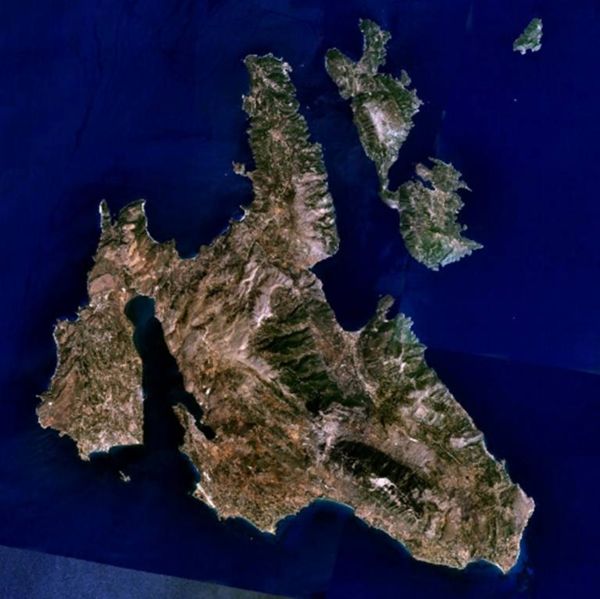 James - The text of the Odyssey gives us three very clear indications on where Ithaca is and what kind of island it was. These are they:
James - The text of the Odyssey gives us three very clear indications on where Ithaca is and what kind of island it was. These are they:
First of all, the Odyssey tells us that Ithaca is in a group of four islands but modern Ithaki is one of three. Secondly, the Odyssey tells us that Ithaca is the farthest West and the farthest out to sea of these islands but Ithaki is the closest East and closest to the mainland. Finally, the Odyssey tells us that Ithaca is low-lying - that it hasn't got any mountains but Ithaki is a mountainous island with cliffs plunging sheer into the sea.
Chris - So the big question is, was the poet just using artistic license when he wrote that and just thought, "Well, it doesn't really matter."
James - You've got two options. That is one. The other is to say we simply haven't found the correct island. Given that we have found other places that are mentioned in the heroic poems like Troy and Mycenae (these have been excavated) we know that they existed. There's therefore reason to believe that the poet described in great detail Ithaca he was talking about a real island.
Chris - Let's bring Robert in. Robert, when did you have the insight that actually we might be on the trail of the wrong island here?
Robert - I was fascinated by the description that James has just given us. Here is an ancient poet describing a world in which his crucial island, the island of his hero, is farthest out to sea, farthest West, low-lying and so forth. When I looked at the map it was actually in the context of planning a family holiday some years ago. I thought, 'how can this be?' How can somebody get it not just marginally wrong but really, really wrong? I wondered, as you suggested, about the explanation that many, many scholars have suggested in the past. Was the reason for this that he just didn't know or he didn't care and he was writing a poem after all, not a travel guide? It seemed to me that that didn't really hang together at all. The reason is it's a motiveless crime to mis-describe your crucial island in such a way. That is to say, either you do know where it is or you don't. If you do know where it is there's no reason for you to mis-describe it. If you don't know where it is why describe it so specifically but incorrectly? The very first time you recite these lines to a bunch of sailors, and Greece is a small place, they're going to say, 'Rubbish! It's not there, it's over here.' It would be like somebody today writing a play which their lead character says without any sarcasm, 'Oh I come from New York: a beautiful city built on a steep hill on the West coast of America.' It's just going to get contradicted and corrected within a very short time with its composition. That's what drew me in. I thought this is a motiveless crime. There must be a different explanation.
Chris - What did you come up with as an alternative suggestion?
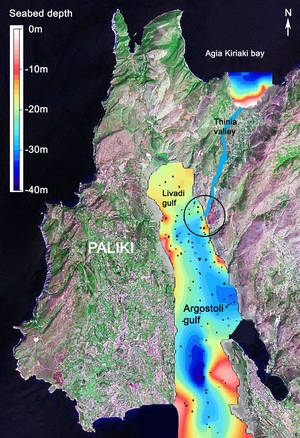 Robert - The alternative suggestion was this: there is clearly this major contradiction between how the poet describes Ithaca and the Island that is today called Ithaki. My though was to say instead of assuming that everybody seems to be that the reason for the discrepancy is that the poet made a mistake what about the alternative that at the time he composed these lines, supposing they were absolutely accurate but something has happened since to change the landscape? That was the, if I can refer back to your earlier material, Eureka moment!
Robert - The alternative suggestion was this: there is clearly this major contradiction between how the poet describes Ithaca and the Island that is today called Ithaki. My though was to say instead of assuming that everybody seems to be that the reason for the discrepancy is that the poet made a mistake what about the alternative that at the time he composed these lines, supposing they were absolutely accurate but something has happened since to change the landscape? That was the, if I can refer back to your earlier material, Eureka moment!
Chris - A good time now to bring in John Underhill who is the Professor of Geology at Edinburgh University. He's involved in this. Would this sit with you as something that could be a possible explanation for what was going on here?
John - Yes. I first got involved with the geology of western Greece back in the 1980s when I did a PhD there. Although Thinea, this key valley that we focussed upon wasn't a primary area as part of that it was one where I had interest and had looked at. When the opportunity materialised to get involved in the project I thought it was worthwhile given that it was a very interesting theory but inherently testable. To be honest I thought at the time that it would be easy to refute. Easy to disprove this particular theory. That's easy to say from Scotland. When you go out into the field it actually proved much more hard to disprove the theory that Robert and James have come up with and just given to you on the ground.
Chris - What they're basically saying is that there's been some massive ground movement which has made what was four islands become three islands. One of them is the original Ithaca.
John - Yeah. The western peninsula, Peliki is very low-lying. There is a narrow valley called Thinea which separates it from the main part of Kefalonia. If that particular valley were once underwater and we're talking 3000-2000 years ago because there are two independent references: one that James has referred to, Homeric text of the Odyssey. The second is that Strabo, the first geographer 2000 years ago (around the time of Christ he was writing) actually says that there is a narrow isthmus where Kefalonia is narrowest. From time to time, not always, it saw waters going from end-to-end. We know very specifically where he was describing because there are two Roman settlements that he mentioned within his text. They both lie on either side or at least the areas which they governed lay on either side of this valley. The theory is very challenged in this valley. We should not underestimate that. The valley itself rises to over 175m at the present day in the central saddle area. The work that I've undertaken around the coastlines of Kefalonia indicate that we cannot have recourse to uplift alone despite the seismicity; the earthquakes recurrence in the area. Wave-cut notches and raised beaches in the area show us that uplift is insufficient. We must appeal to other processes.
Chris - What you're saying is that we can't just say the land has risen to join these islands together. There must be something else going on?
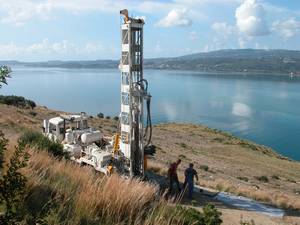 John - That's correct. In this particular area which we know to be the earthquake hotspot of Western Europe it lies at the boundary between the Eurasian and African plates. Cephalonia is, in fact, the seismically most active part of Greece. As the earthquake earlier today in western Greece (6.5 magnitude in western Greece) testifies this is really one of the most active areas in the world, let alone Europe.
John - That's correct. In this particular area which we know to be the earthquake hotspot of Western Europe it lies at the boundary between the Eurasian and African plates. Cephalonia is, in fact, the seismically most active part of Greece. As the earthquake earlier today in western Greece (6.5 magnitude in western Greece) testifies this is really one of the most active areas in the world, let alone Europe.
Chris - What have you done to test the hypothesis that these four islands have become three?
John - The first thing we did was ground geology. We mapped the area and it was clear from a very early stage that the surface geology is insufficient to test the theory rigorously. You need to look beneath the ground. What you can see on the ground in the area is that there is massive landslide and rock fall debris strewn across the valley surface. Large boulders the size of houses, trucks and the like which as we know from the August '53 earthquake, which was depicted in Captain Corelli's Mandolin of course, there were catastrophic failures of whole hillsides at that time. They've been captured on film and are in the record.
Chris - So you think there was a big landslide potentially that could have filled in the gap which previously was covered by ocean but filled in now by debris from a landslide? Does this mean then that you could find out historically is such a landslide existed?
John - Only by looking under the ground. I think we would be foolish to think it was a single landslide. Catastrophic landslides occur regularly within this area. Indeed in November of last year without an earthquake attached to it a village, Nifi, was swept away unfortunately after a major landslide from the eastern slopes of Thinea. Tests of the principle we are looking at.
Chris - But you've done some drilling, haven't you?
John - The first borehole that we drilled was back in Autumn of 2006. It was located on the eastern side of the valley. We drilled down from a surface elevation of 107m. We drilled down 122m so below sea level. Interestingly, that borehole found rock fall debris extending at least 40m below the current land surface i.e. 67m above present sea level. Most importantly the matrix to that borehole contained large boulders of cretaceous and other limestone material derived from the eastern slopes a very young fossil called Emiliana Huxley, a marine fossil that is 80,000 years or younger. Actually within this area we know marine waters only reached the region within the last 5000 years. A very interesting result.
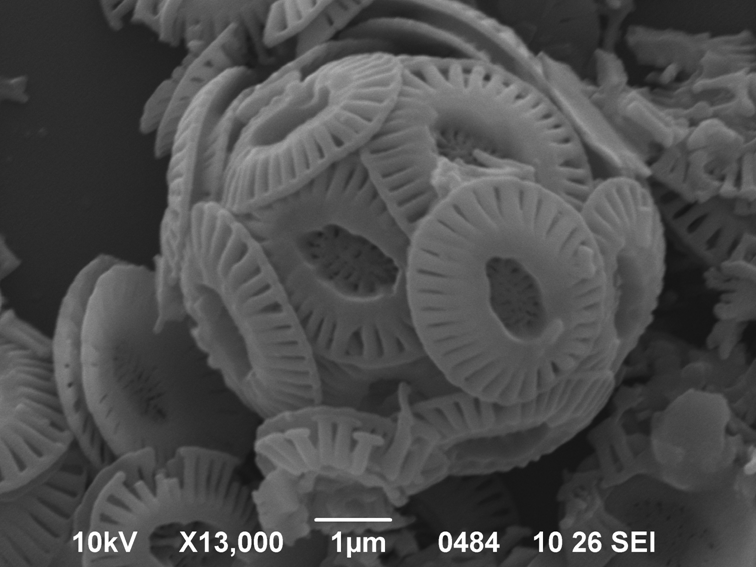 Chris - Robert, this must be extremely pleasing to you.
Chris - Robert, this must be extremely pleasing to you.
Robert - I have learnt that one shouldn't get too excited too soon as new bits of evidence come along. I think on the scale of things this is a tough geological challenge. I'm sure John would agree this isn't something that can be solved by a field study for a couple of weeks. Yes, it was very exciting after that autumn drill hole when the borehole went right the way down, didn't encounter any solid limestone. It encountered material that made us think with the possibility of an enormous rock fall event or series of events came thundering down the mountainside, hit a body of relatively shallow sea water and in the process of that perhaps thrust much of that water up into the air in such a way as to interpenetrate all the debris coming down and end up with all these tiny nanofossils. That's one possible mechanism and there are other mechanisms but what we are finding as this work is done nothing John's saying is, 'That's it. End of theory it's impossible.' It's tough to interpret the data. It takes a lot of work, a lot of resource and fortunately a lot of industry support that we're now getting to the project.
Chris - James, you must be really pleased that this has come to this point but what do you think is going to be a next step from your classics point of view?
James - I think what I find so wonderful about this is that it mixes together a whole variety of disciplines. My particular interest is on the literary and historical side but it blends with that archaeology, geology, science of various kinds, mythology - just about everything. A wonderful multidisciplinary activity that we've got ourselves involved in but if we can just go back to Troy and Mycenae. Troy was believed once upon a time to have never existed. Heinrich Schliemann discovered it in the 1870s. Mycenae was then excavated. Now we think we're on the brink of demonstrating that Odysseus' civilisation, palace on Ithaca existed too.
Visit the project website: http://www.odysseus-unbound.orgRead about the discovery: http://www.odysseus-unbound.org/book.html

41:31 - Seeing Secrets Underground
Seeing Secrets Underground
with Chris Leech, Geomatrix Earth Sciences Ltd
Meera - These days when searching for ancient remains and hidden treasures you don't need to have the magical map where X marks the spot. You can now see into the ground using the powers of geophysics to find X for yourself. This week I'm in Leighton Buzzard in Bedfordshire to find out how to hunt for ancient remains myself. Here to help me is Chris Leech, geophysicist and director of Geomatrix Earth Sciences Ltd.
 Chris L - Geophysics is really the science of trying to find what is down below the ground without actually having to dig a hole. We're looking for changes in the physical properties of the ground. If you've got a 10 hectare site that you're interested in and you think there might be archaeology underneath it you're going to have to dig an awful lot of holes in the ground if you don't do geophysics first. With the geophysics it allows you to very rapidly, relatively cost-effectively narrow-down the area which is of great interest to the real archaeologists.
Chris L - Geophysics is really the science of trying to find what is down below the ground without actually having to dig a hole. We're looking for changes in the physical properties of the ground. If you've got a 10 hectare site that you're interested in and you think there might be archaeology underneath it you're going to have to dig an awful lot of holes in the ground if you don't do geophysics first. With the geophysics it allows you to very rapidly, relatively cost-effectively narrow-down the area which is of great interest to the real archaeologists.
Meera - What are the techniques used?
Chris L - There are several techniques which are useful for archaeological geophysics. We tend to look for the magnetic signatures of the ground. We tend to look for the electrical properties of the ground. Also we use the growing technique of ground-penetrating radar therefore looking at the electromagnetic properties of the ground.
Meera - The equipment that you have strapped to yourself here is basically a horizontal pole with two vertical poles attached at either side and a rucksack that's strapping you into it, really. Which technique does this piece of equipment use?
Chris L - This is a magnetometer. Therefore we are actually measuring precisely changes in the Earth's magnetic field at this point. The two vertical poles are actually two separate magnetometers so you can measure the Earth's magnetic field in two places at the same time. The horizontal pole you described feeds the data back into a small data logger. By having two magnetometers we can speed up our operation. We can acquire two lines of data right at the same time.
Meera - How does a magnetometer actually measure the magnetic field beneath it?
Chris L - Each of the tubes which we mentioned earlier contains two fluxgate sensors. These measure very precisely the Earth's magnetic field in the vertical component. By measuring it in two different places we can get a measure of the change in the magnetic field over that distance which is 1m between each sensor. We're measuring the vertical gradient of the Earth's magnetic field in two places simultaneously.
Meera - How does this then translate to tell you where things are located?
 Chris L - All materials have got a magnetic signature be it different types of soils or manmade objects such as bricks or artefacts of some description. If we can measure the magnetic field with sufficient accuracy and sufficient resolution as we go over the ground we can see very small changes in the Earth's magnetic field.
Chris L - All materials have got a magnetic signature be it different types of soils or manmade objects such as bricks or artefacts of some description. If we can measure the magnetic field with sufficient accuracy and sufficient resolution as we go over the ground we can see very small changes in the Earth's magnetic field.
Meera - So you have this magnetometer set up and strapped on, ready to go. What's the next step to take a reading from this field that we're in?
Chris L - Well, we've got our grid set out. We're at our starting point so all I need to do is press go.
beep... beep... beep...
Meera - So what's happening now?
Chris L - We can see the data being acquired on the screen. We can see numerical values being displayed and the beeping that you can hear is just telling us that the instrument is working. Every time it takes a reading we get the beep.
Meera - How do you go from scanning an area to producing an entire map pinpointing the hotspots of where's good to dig?
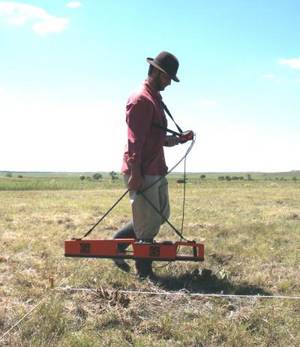 Chris L - The traditional way of doing it with archaeology is to divide your field up into a series of grid which may be 20 or 30m square. Then you'll walk up and down lines maybe 1 or 2m or if it's a high resolution survey 0.5m apart and so on, creating these grids until you've covered the whole area. The more modern way of doing it is to use GPS in which case you don't have to lay out your grids. The GPS will navigate you up and down lines. Once we have covered that we can then take the data back to our office and using a mapping programme we can then produce a map in various styles which highlight various different archaeology or soil types if you're doing geoarchaeology, for example. Once we've got a map we can start to see the patterns emerging. We're obviously going to get a lot of background clutter which will just be naturally occurring rocks and other pieces of what I would call junk which maybe things like nails which have fallen off people's shoes or horse shoes or beer bottle, cans etc etc. These little things you can't really see when you're out in the field. You can't tell if they're real archaeology or if they're man-made rubbish. Once we've made a map out of them we can tell one from the other.
Chris L - The traditional way of doing it with archaeology is to divide your field up into a series of grid which may be 20 or 30m square. Then you'll walk up and down lines maybe 1 or 2m or if it's a high resolution survey 0.5m apart and so on, creating these grids until you've covered the whole area. The more modern way of doing it is to use GPS in which case you don't have to lay out your grids. The GPS will navigate you up and down lines. Once we have covered that we can then take the data back to our office and using a mapping programme we can then produce a map in various styles which highlight various different archaeology or soil types if you're doing geoarchaeology, for example. Once we've got a map we can start to see the patterns emerging. We're obviously going to get a lot of background clutter which will just be naturally occurring rocks and other pieces of what I would call junk which maybe things like nails which have fallen off people's shoes or horse shoes or beer bottle, cans etc etc. These little things you can't really see when you're out in the field. You can't tell if they're real archaeology or if they're man-made rubbish. Once we've made a map out of them we can tell one from the other.
Meera - So, out in the field I just need to stick to my grid and record regular measurements to cover the whole area. I'm off to hunt for some treasure!
beep... beep... beep...
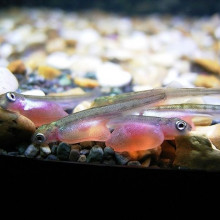
47:09 - Surviving in Salt- and Fresh-water?
Surviving in Salt- and Fresh-water?
Mark Briffa, University of Plymouth. Marine biologist with an interest in behavioural ecology:
Osmolarity describes the concentration of solutes in a solution. The problem that marine and freshwater fishes face are really two sides of the same coin. With freshwater fish there's a for salts to move out of the body leading to bloating and loss of salts. For marine fishes there's a tendency for water to move out of the body, leading to dehydration and excess salts. The most obvious trick to cope with these problems is to place a barrier between the insides of the body and the environment outside. The skin of the majority of fishes, both marine and freshwater, is relatively impermeable for water. Fish do need some permeable surfaces for respiration and water still moves between their tissues and the external environment. Freshwater fishes avoid water gain by not drinking and producing large amounts of urine. Marine fishes avoid water loss by drinking and producing small amounts of urine. In addition to these mechanisms fresh water fishes use their gills to absorb salts and marine water fishes use their gills to secrete salts. When salmon and eels migrate between freshwater and the sea there's a change in the cellular structure of their gills which enables their gills to start secreting salts just like a normal marine fish. All bony fish have to osmoregulate and since they first evolved in the sea it might appear that this would be easier for marine fishes but this is a bit of a red herring.
Why does the sound of nails on a chalk board get such a physical reaction from us?
It's horrible, isn't it? The reason for this is not 100% known but there is a hypothesis. The idea is that the kind of frequencies that you get when you get the fingernails-down-the-blackboard experience is similar to the kind of frequencies that animals release when they're in distress. It's a kind of distress signal and therefore we are pre-programmed or galvanised into action by those particular choice of frequencies.
- Previous Over-Salted Fish
- Next Toning Up and Greenhouses on the Moon










Comments
Add a comment